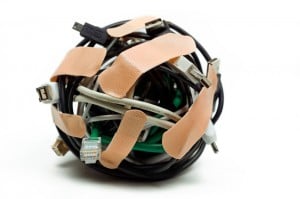 On
the surface, it would seem that high availability (HA) and disaster recovery (DR) for file transfer processes would have always been a top priority. While true for some organizations, not everyone has considered it an essential component. It seems
that’s changing, as secure file transfer systems become critical to compliant multi-enterprise communication…the glue for getting business done.
On
the surface, it would seem that high availability (HA) and disaster recovery (DR) for file transfer processes would have always been a top priority. While true for some organizations, not everyone has considered it an essential component. It seems
that’s changing, as secure file transfer systems become critical to compliant multi-enterprise communication…the glue for getting business done.
There are dozens of reasons why this is now the case, but in today’s post, I’ve summarized them into four reasons to encourage you to reconsider HA and DR as a necessity for effective file transfer systems. Here we go…
Reason #1: File Transfer Continuity
If file transfers are slow, inconsistent or (at worst) unavailable, then the entire business suffers – from the business manager right up to the CEO. File transfers used to take place in silos across the enterprise. With Managed File Transfer (MFT) taking on a more critical role within companies, this is changing and becoming centralized under IT. By leveraging HA and DR as part of file transfer processes, organizations can ensure that critical (and sensitive) files are delivered consistently and reliably.
Reason #2: The Cost of Downtime
In addition to the soft costs (time, reputation, etc.), there are also hard costs that come with being unable to reliably transfer files between employees, partners and customers, including missed SLA penalties, lost business opportunities and impact on supply chain. Needless to say, the cost of implementing HA is certainly less expensive than an extended outage or slow performance, especially when critical business relationships are at stake.
Reason #3: The Need for Scalability
File transfer volume is never stagnant; there are ebbs and flows, but overall the number of files transferred (and the size of files) is only going to grow. And as volume and number of projects increase, many have found their current file transfer system can only scale by adding more stand-alone servers (an admin headache). But a mature MFT implementation that enables HA/DR may also provide the means to scale horizontally and increase performance by adding application nodes to a Web Farm.
Reason #4: Compliance Means Never Having to Say “We’re Down”
Outages are not only costly from a pure dollars-and-cents perspective. If they persist, they can take up an inordinate amount of time as you’re forced to deal with compliance issues related to HIPAA, PCI, SOX and other industry regulations. HIPAA, for instance, has very specific rules and procedures that must be followed in the event of an outage, including data backup plans, disaster recovery plans, emergency mode operations plans and others. Granted, compliance requirements are far more encompassing than uptime and availability, but for organization that want to avoid fines for compliance violations, , data backup and disaster recovery should be considered a high priority.
********
As I mentioned at the beginning of this post, there are lots of reasons why HA/DR is now considered a must-have, which leads to my closing question: Does your business consider HA/DR a critical part of its file transfer process? Be sure to share your answers in the comments section below.